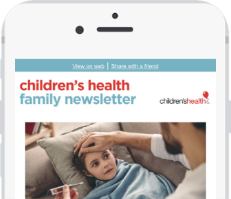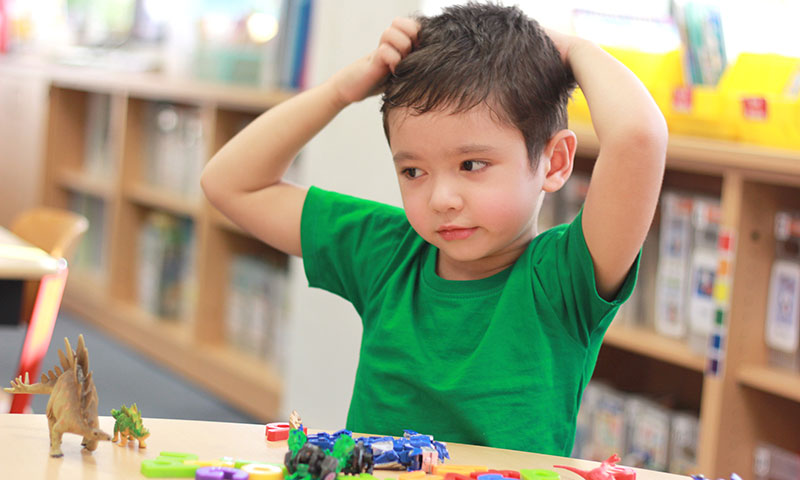Lice is a common, creepy-crawly problem that many school-age kids will face at some point – which unfortunately means that you, as a parent, will too. These little bugs are only about two millimeters long and like to make a home in the hair of kids. Though they can't fly or hop, they can crawl fast, easily spreading from one child to another.
How do kids get lice?
According to the Centers for Disease Control and Prevention, an estimated 6-12 million kids get lice every year. "Because kids spend a lot of time together, whether playing, napping next to each other, or sharing a hair brush or a pillow, they are more likely than adults to spread lice through head-to-head contact," explains Dawn D. Johnson, M.D., Medical Director of Children's Health℠ Pediatric Group.
How do I know if my kid has lice?
The most common symptom of lice is an itchy scalp. You might notice your child scratching at his or her head a lot, especially around the ears or neck.
It's easy to check for lice in your child's hair. Using a comb, part your child's hair and look closely at the scalp for small white or yellowish-brown dots that are stuck firmly to strands of hair. These dots are lice eggs (called nits). Though you may not see crawling adult lice, nits are a sign that lice are present.
If you spot nits on your child's scalp, you should check your whole family for lice.
How to treat lice
Though lice can be icky, you can treat them at home using medicated shampoos and lotions designed to kill lice. These are available at drug stores. Follow the directions on the shampoo bottle for these products to ensure you get rid of all the little bugs while keeping your child safe.
You may also need to use a fine-toothed comb to remove all lice eggs. You can repeat the shampooing a week or so later to ensure the lice and nits are gone.
After using the shampoo solution, soak the comb you used to treat your child's lice in the medicated shampoo. It is a good idea to soak any hairbrush or comb your child or family member recently used in the medicated shampoo or in rubbing alcohol.
Because lice might be in other areas of your house, you should wash your child's bed linens in hot water. Also, vacuum carpets and upholstered furniture, and then throw away the vacuum bag.
It's a good idea to contact your child's school or daycare to ask if other kids have lice. They may want to do a screening to help stop the spread of lice. Most schools do not make your child miss any school if they have lice.
How to prevent lice
Though you can't stop a lice outbreak at school or daycare, you can teach your child some good habits to help avoid getting lice. Teach your child to avoid:
- Sharing hats or helmets with other kids
- Sharing combs, brushes, hair ties or barrettes with other kids
- Head-to-head contact with other kids when possible
If your child gets lice, don't panic and don't be embarrassed; it has nothing to do with hygiene. "If children have lice, it doesn't mean they don't wash their hair enough or that they are dirty," says Dr. Johnson. "It is one of those common problems kids face — and even adults, too."

Thank you!
You are now subscribed to the Children's Health Family Newsletter.
Children's Health will not sell, share or rent your information to third parties. Please read our privacy policy.
